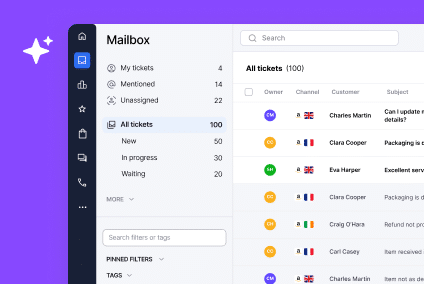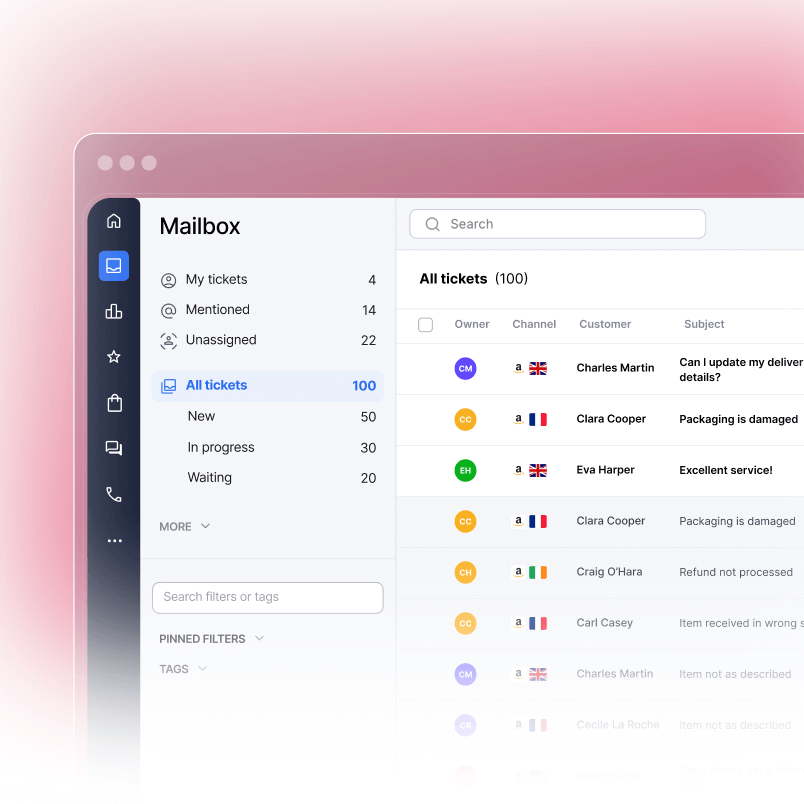What fees does Etsy charge sellers? Etsy charges several types of fee including a small listing fee, a percentage when you sell, and payment processing when money changes hands. Optional extras like ads or subscriptions add costs only if you turn them on.
In this guide, we’ll break down every Etsy fee clearly, show real order examples, and explain when optional costs like Etsy Ads and Offsite Ads make sense. We’ll also map where charges appear in your account and give you a simple pricing checklist to protect margins without guesswork.
There were 96.6 million active buyers on Etsy in 2024, according to research by Business of Apps.
What fees do you pay on every Etsy sale?
Three core fees apply to most sellers.
Listing fee
Etsy charges $0.20 USD for each listing you publish. Listings last four months, then auto-renew for $0.20 if stock remains. You’ll also pay $0.20 per additional unit sold from the same multi-quantity listing.
Transaction fee
When you sell, Etsy takes 6.5% of the item price plus shipping and gift wrap that you charge the buyer. (Taxes aren’t included.)
Payment processing fee
If you use Etsy Payments, there’s a set rate plus a percentage. In the US, it’s 3% + $0.25 per order. Rates vary by country and are taken from the order total including shipping.
What are the optional fees and when they make sense?
These only apply if you opt in or if a specific ad click leads to your sale.
Etsy Ads
Onsite ads you run inside Etsy search and browse. You choose a daily budget and pay per click and there’s no fixed fee, but costs add up fast if targeting is loose. This is good for seasonal peaks, new launches, or to give proven winners a signal boost.
Offsite Ads
Etsy advertises listings on external sites, and if a sale is attributed to one of those clicks, you’re charged 15% if your shop has under $10,000 in trailing 365-day sales, or 12% if you’re at or above $10,000. High-volume shops are enrolled in Offsite Ads by default.
Etsy Plus
Etsy Plus is an optional $10 per month subscription with perks like listing and ad credits, shop customization, and restock alerts. It’s helpful if you’ll use the monthly credits and want the extra tools.
Pattern by Etsy
This is an optional website for your brand, and it costs $15 per month after a 30-day trial. It’s useful if you want a simple storefront with Etsy handling payments.
Share & Save
Share & Save lets you share a special shop or listing link. When a buyer uses that link and places an order within 30 days, Etsy credits you a 4% refund on that order’s fees. It doesn’t change the buyer’s price, and the refund appears in your Payment account.
Regulatory operating fee
In some countries, Etsy adds a small percentage on item price and shipping to cover local compliance. The exact rate varies by country, so take a look at Etsy’s by-country breakdown for more information.
Real examples: fee breakdowns on common order sizes
To make it tangible, here are three US examples using Etsy Payments. All exclude the $0.20 listing fee unless noted.
Example A: $20 item + $4 shipping
- Transaction fee: 6.5% of $24 = $1.56
- Payment processing: 3% of $24 + $0.25 = $0.72 + $0.25 = $0.97
- Total fees: $2.53
- Net before product cost and tax: $21.47
Example B: $50 item + $5 shipping
- Transaction fee: 6.5% of $55 = $3.58
- Payment processing: 3% of $55 + $0.25 = $1.65 + $0.25 = $1.90
- Total fees: $5.48
- Net before product cost and tax: $49.52
Example C: $120 item + free shipping
- Transaction fee: 6.5% of $120 = $7.80
- Payment processing: 3% of $120 + $0.25 = $3.60 + $0.25 = $3.85
- Total fees: $11.65
- Net before product cost and tax: $108.35
Average seller income on Etsy was $1,236 in 2024, according to CapitalOne Shopping.
How do fees show up in my account?
Etsy debits fees automatically from your Payment account balance. You’ll see each of the following line items in the ledger:
- listing fees
- renewals
- transaction fees
- payment processing
- ad charges
- any refunds
If your balance is negative at month end, Etsy charges the card on file. It’s worth keeping a weekly eye on your Payment account so nothing surprises you.
Make the review process easier by:
- exporting monthly statements and tag fees by type
- noting any Offsite Ads attributions, which arrive as separate line items
- checking auto-renew counts so you aren’t paying $0.20 on low-traffic items that need a refresh
40% of Etsy buyers are repeat customers, and 8.9% are habitual buyers, Business of Apps reported.
A practical plan for pricing and margin
Good news, you can price with confidence without owning a complex calculator. Let’s walk you through a simple approach to get you started. You can always refine things once you’ve made a start.
1) Set a target margin per product
Work from your fully loaded cost: materials, packaging, labor, and an allowance for Etsy fees. Add a buffer for returns and seasonal discounts.
2) Use a fee guardrail
As a rule of thumb, plan for 10% to 15% in marketplace fees on most orders that use Etsy Payments. If you rely on Offsite Ads or have high shipping charges, aim closer to 15% to 20%.
3) Price in small, testable steps
Move in increments you can measure. Run a price for two weeks, note conversion and profit per order, then adjust by one or two dollars. Don’t swing wildly.
4) Improve conversion to lower fee pressure
Better photos, clear titles, and answers to common questions all improve the customer experience and therefore can boost conversion. Higher conversion spreads fixed costs across more orders.
5) Automate customer replies that repeat
Shoppers ask about shipping windows, personalization, and care. Quick replies save time and help you avoid avoidable refunds. If you’re scaling, use automating workflows that handle routine updates so your team can focus on the tricky cases.
6) Keep channels connected
If you’re also selling on marketplaces beyond Etsy, it helps to pull everything into one inbox so replies stay fast and consistent. Make the most of integrations that centralize messages and order context in one place.
Etsy had 8.1 million active sellers in 2024, according to Business of Apps.
When should I use Etsy Ads, Offsite Ads, and Etsy Plus?
Etsy Ads
Etsy Ads are great when you already see organic traction and want more reach on proven listings. Start with a small daily budget, add your top sellers, and review search terms weekly. If a term spends but doesn’t convert, pause it and move that spend to winners. Keep your listings clean: front-load the product type and defining detail in the title, and make sure the first image pops in grid view.
Offsite Ads
If you sell at scale or in gifting categories, Offsite Ads can deliver incremental orders you wouldn’t get on your own. Watch your margins on lower-priced items if you’re in the 15% bracket. If you keep most traffic organic or from your own social channels, enroll in Share & Save and push your custom links so you earn the 4% fee refund.
Etsy Plus
Etsy Plus is worth a look if you’ll use the monthly listing and ad credits and want the extras like restock alerts and shop customization. However, if you don’t use the credits, you’re paying for perks you may not need, so test it out and reassess after three months.
Things to remember & things to try this week
Remember:
Take heart, you don’t need a spreadsheet marathon to get on top of Etsy fees. But you do need to:
- Focus on what you control
- Price with a clear margin buffer
- Improve listing conversion so fixed costs stretch farther
- Turn on the right extras at the right time
- and keep a weekly habit of checking your Payment account so you spot fee creep before it dents profits.
Three things to try this week:
- Refresh pricing on your top five listings with a margin buffer that covers 10% to 15% in fees
- Enroll in Share & Save and switch your bio and social links to your trackable URLs
- Add one automation to speed up common replies about delivery windows or personalization
Want a faster way to keep customer replies accurate while you fine-tune pricing and fees on Etsy? Book a free demo and we’ll show you how eDesk brings messages, orders, and updates into one place so your team answers quickly and confidently.
FAQs
How do Etsy seller fees work in one sentence?
Etsy charges $0.20 to list, 6.5% of item price plus shipping when you sell, and a payment processing fee when funds move through Etsy Payments, with optional extras for ads and subscriptions.
What fees should I include in my product pricing?
Bake in the 6.5% transaction fee, your country’s payment processing fee, the $0.20 listing fee, and a small buffer for renewals. If Offsite Ads is a meaningful driver for you, add a margin allowance for 12% or 15% on attributed orders.
Are Etsy Ads worth it if I’m new?
They can be, but only on listings that already convert from organic traffic. Start small, promote a handful of winners, and review search terms weekly so you aren’t paying for clicks that never turn into orders.
Is Etsy Plus worth $10 each month?
If you’ll use the monthly listing and ad credits and want restock alerts and extra shop customization, the net cost can be attractive. If you don’t use the credits, it’s fine to skip it and revisit later.
How do I see exactly what I’m paying?
Open your Payment account to view a line-by-line ledger. Export a monthly CSV and group by fee type so you can spot surprises like frequent auto-renewals or Offsite Ads attributions.




